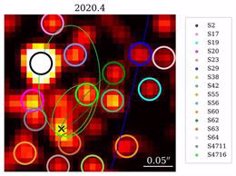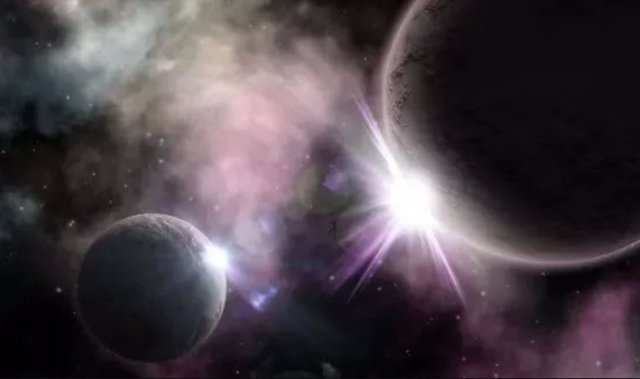Illustration of the two new planets discovered by Gaia – TEL AVIV UNIVERSITY
July 15 () –
ESA’s Gaia mission, dedicated to mapping the stars of the Milky Way, has discovered its first two planets in solar systems located in a remote corner of the galaxy.
Researchers from Tel Aviv University led the discovery of the two giant planets, named Gaia-1b and Gaia-2b, as part of a collaborative study with teams from the European Space Agency (ESA). It is published in Astronomy & Astrophysics.
The development marks the first time the Gaia spacecraft has successfully detected new planets, Tel Aviv University (TAU) reports. Gaia is a star-gazing satellite on a mission to map the Milky Way in 3D with unprecedented precision. comparable to standing on Earth and identifying a nickel on the Moon.
“The discovery of the two new planets was made as a result of precise searches, using artificial intelligence methods,” he said. it’s a statement Professor Shay Zucker, Director of the Porter School of Environmental and Earth Sciences at TAU. “We have also published 40 more candidates that we detected by Gaia. The astronomical community now will have to try to substantiate its planetary nature, as we did with the first two candidates.”
The two new planets are known as “hot Jupiters” because of their size and proximity to their host star: “Measurements we made with the telescope in the US confirmed that these were indeed two giant planets, similar in size to the from the planet Jupiter in our solar system, and located so close to their suns that they complete an orbit in less than four days, which means that each terrestrial year is comparable to 90 years of that planet“, he adds.
To accomplish its mission, Gaia scans the skies as it rotates around an axis, tracking the locations of around 2 billion suns, stars at the center of a solar system, in our galaxy with accuracy down to one millionth of a degree. While tracking the location of stars, Gaia also measures their brightness, an incomparably important feature in observational astronomy. since it transmits significant information about the physical characteristics of the celestial bodies that surround them.

Documented changes in the brightness of the two remote stars were what led to the discovery. Co-author and PhD student Aviad Panahi explains: “The planets were discovered by partially obscuring their suns each time they complete an orbit, and so cause a cyclical drop in the intensity of the light reaching us from that distant sun.”
To confirm that the celestial bodies were actually planets, the researchers made follow-up measurements with the Large Binocular Telescope in Arizona, one of the largest telescopes in the world today. The telescope it allows to trace small fluctuations in the movement of a star caused by the presence of an orbiting planet.
The discovery marks another milestone in the scientific contribution of the Gaia spacecraft mission, which is already credited with a true revolution in the world of astronomy. Until now, the ability of Gaia to discover planets using the partial occultation method, which generally requires continuous monitoring over a long period of time, has been questioned. The research team in charge of this mission developed an algorithm specially adapted to the characteristics of Gaia and searched for years for these signals in the spacecraft’s cumulative databases.
“The new planets are very close to their suns and therefore the temperature there is extremely high, around 1,000 degrees Celsius, so there is zero chance of life developing there,” Panahi explains. Still, he says, “I am convinced that there are many others that do support life, and it is reasonable to assume that in the next few years we will discover signs of organic molecules in the atmospheres of remote planets.”




![[Img #74674]](https://thelatestnews.world/wp-content/uploads/2024/12/Santiago-Ramon-y-Cajal-The-promoter-of-modern-neuroscience-150x150.jpg)








![[Img #74674]](https://thelatestnews.world/wp-content/uploads/2024/12/Santiago-Ramon-y-Cajal-The-promoter-of-modern-neuroscience-300x200.jpg)


Add Comment